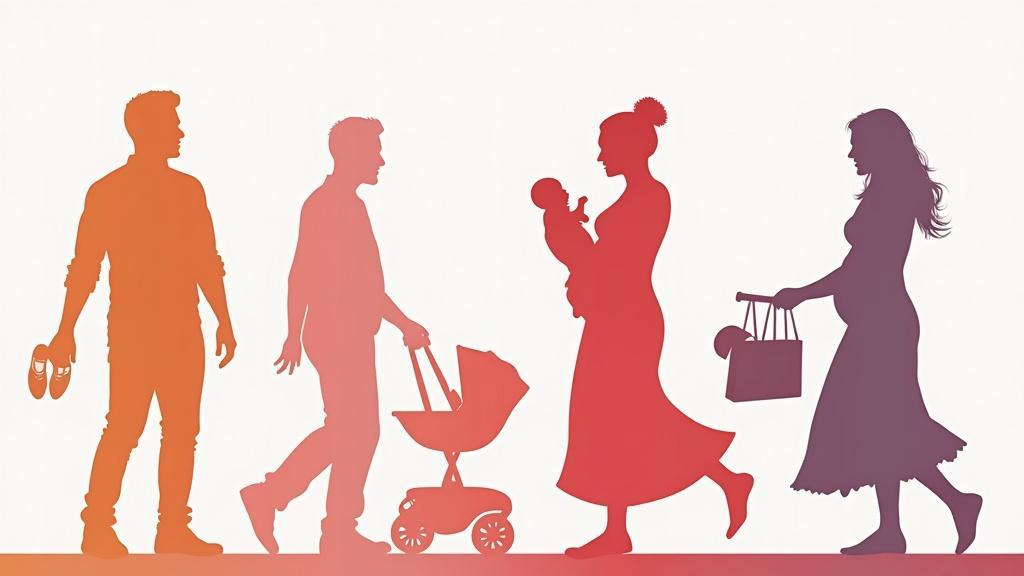Understanding the right baby sleeping position is crucial for ensuring a safe and restful night for both infants and their parents. As new parents navigate the challenges of infant sleep safety, they often find themselves juggling concerns regarding baby sleep patterns and potential tummy sleeping risks. In fact, a staggering percentage of parents experience sleep deprivation, making the quest for quality rest even more pressing. With many experts recommending that babies can safely sleep on their stomachs once they can roll over, it’s essential for parents to stay informed. This introduction to baby sleeping positions not only aims to ease parental anxiety but also provides valuable new parent sleep tips for achieving peaceful nights.
The topic of infant sleep is a significant concern for many caregivers, often revolving around how newborns and young children should be positioned during rest. Commonly referred to as sleeping posture, this subject highlights the importance of safe practices to prevent issues like Sudden Infant Death Syndrome (SIDS). Many new parents find themselves in a whirlwind of anxiety about their child’s sleep habits, especially when faced with the common dilemma of tummy sleeping versus back sleeping. By exploring various sleeping arrangements, caregivers can help ensure not only their baby’s safety but also their own well-being, addressing factors associated with stress and exhaustion. Understanding the dynamics of baby sleep positioning can ultimately foster healthier sleep habits for the entire family.
Understanding Infant Sleep Patterns
Every parent experiences the unique challenge of understanding their baby’s sleep patterns. These sleep patterns can vary immensely from one infant to another, often leaving new parents feeling perplexed and sleep-deprived. Typically, newborns sleep for a good portion of the day, gradually transitioning to more wakeful periods as they grow. By six months, many babies start establishing a more consistent sleep routine, but deviations, like tummy sleeping, can create anxiety for parents, particularly those who have just embarked on their journey of parenthood.
Recognizing the signs of a healthy sleep pattern can help alleviate some of the stress associated with parenting. For instance, infants may display certain cues, such as rubbing their eyes or becoming fussy, when they are tired. Parents must also understand that disturbances in sleep, especially in the first few months, do not mirror a failure on their part but are normal aspects of infant development. Utilizing insights from resources on infant sleep safety can empower parents, leading to better coping strategies and a more restful environment for both the parent and the baby.
Baby Sleeping Positions: Safety First
The sleeping position of a baby plays a crucial role in ensuring safe sleep practices. Parents often have to make informed decisions about whether their infant should sleep on their back or tummy. Pediatrics strongly recommend back sleeping during the initial months due to the higher risk of Sudden Infant Death Syndrome (SIDS) associated with tummy sleeping in younger infants. Nonetheless, as babies grow and develop the ability to roll over—typically around six months—the recommendations evolve.
If a baby can roll from back to stomach and vice versa, the associated risks of tummy sleeping decrease significantly. Experts like Dr. Matthew Badgett emphasize that once an infant reaches this milestone, tummy sleeping is generally safe and does not pose the same risks once feared. Parents can find peace of mind by understanding these guidelines, thereby reducing their anxiety and improving their own sleep quality. It’s essential to foster an environment that prioritizes both baby’s comfort and safety.
Sleep Deprivation Among New Parents
Sleep deprivation is a common hurdle faced by new parents, often leading to serious repercussions on mental health. Many, like Amy Gitts, report feeling overwhelmed by anxiety as their infant adapts to new sleeping habits. The consequences of insufficient sleep can manifest as increased stress levels, irritability, and guilt about one’s parenting capabilities. Surveys show that a striking 72% of new parents get inadequate sleep, with a significant percentage admitting to feeling more stressed when sleep is elusive.
Restorative sleep is crucial for parents to maintain their health and effectively nurture their infants. To combat sleep deprivation, experts suggest establishing structured routines for both the parent and the baby. Practicing relaxation techniques, creating a soothing sleep environment, and even incorporating nap times when the baby sleeps can contribute to enhanced sleep quality for new parents. It’s integral for parents to remember that they are not alone in this struggle and to seek support when necessary.
New Parent Sleep Tips: Finding Peace at Night
When faced with sleepless nights, new parents can turn to various strategies to reclaim restful sleep. One effective tip is to create a personalized bedtime routine that signals to both the baby and parent that it’s time to wind down. Simple activities such as reading a book or dimming the lights can cultivate a calming atmosphere conducive to sleep for both. Involving a partner in nighttime duties can also distribute the responsibilities, allowing each parent to catch up on much-needed rest.
Additionally, being educated on infant sleep safety can empower parents, helping them feel more secure in their choices. Gaining insights from the experiences of others through social media platforms or parenting forums can provide comfort. Knowing that many other parents navigate similar challenges allows for a greater sense of community and support. By prioritizing their own sleep and well-being, parents can better care for their little ones.
Addressing Tummy Sleeping Risks: Insights and Guidelines
While many parents worry about the risks associated with tummy sleeping, it is essential to approach the situation with a balanced perspective. Pediatric guidelines specify that tummy sleeping can be riskier for infants under six months. However, as babies develop the muscle tone and coordination needed to roll over, the risks diminish markedly. Understanding when it is safe for babies to sleep on their stomachs alleviates much of the anxiety surrounding this natural development.
Frequent monitoring during infants’ sleep periods can further ensure peace of mind for parents. It may initially be tempting to intervene at every movement or sound, but as children learn to regulate their sleep, parents should gradually allow them to self-soothe. Leveraging available information about baby sleep patterns and tummy sleeping can help form decisions that make parents feel secure as they support their baby’s evolving sleep habits.
The Importance of Peer Support in Parenting
First-time parents often benefit significantly from creating a support network of peers who understand their challenges. Social media platforms and local parenting groups provide an avenue for sharing stories and solutions about issues like sleep deprivation and infant sleep patterns. Hearing from others who have faced similar struggles, like overcoming anxiety related to a baby’s sleeping position, can reassure new parents that their feelings are valid.
Moreover, peer support can foster a collaborative approach to handling difficulties that arise in navigating parenthood. Sharing tips, such as strategies for handling sleepless nights or managing anxiety, enriches the parenting experience. A supportive community reduces isolation and creates an environment where parents can thrive, as they exchange practical solutions to common concerns, allowing them to focus more on the joys of parenthood.
Creating a Safe Sleep Environment for Infants
Establishing a safe sleep environment for infants is essential for promoting healthy sleep habits and significantly reducing the risks of SIDS. Parents should follow recommendations for a firm mattress, use sleep sacks instead of blankets, and keep the crib free from toys or soft bedding. Implementing these practices can sharply decrease safety risks associated with sleep, allowing parents to rest more easily knowing their baby is safe.
Furthermore, ensuring that the sleeping area has a comfortable temperature and maintaining a calm atmosphere can enhance the overall sleep experience for the baby. Parents should also monitor the ambient noise and light levels to support consistency in their sleep routine. By taking these necessary precautions, parents can create a nurturing environment that encourages better sleep for both baby and caregiver.
The Impact of Stress on New Parents’ Sleep
The correlation between stress and sleep deprivation is particularly pronounced for new parents. As they acclimate to the relentless cycle of caring for an infant, anxiety can infiltrate even the most peaceful moments. Stress may stem from worrying about the baby’s health and well-being or from the sheer exhaustion of sleepless nights. The mental burden can amplify feelings of guilt and inadequacy as parents strive to balance their needs with those of their child.
To mitigate the impact of stress, parents are encouraged to practice mindfulness and engage in stress-reducing activities. Seeking help from friends, family, or professionals such as counselors can provide essential support. Mindful practices such as deep breathing or guided meditations can also be effective in promoting mental clarity and relaxation, allowing new parents to reclaim their sleep. Unlocking pathways to stress reduction ultimately enhances parents’ capacity to care for their beloved infants.
Common Myths About Infant Sleep
Myths surrounding baby sleep can exacerbate anxiety for new parents. One common misconception is that babies should always be on their backs to sleep, even after they’ve developed the ability to roll. While back sleeping is vital for young infants, as development progresses, it’s normal for babies to gravitate towards tummy sleeping. Feeling empowered with accurate information around these topics can quell unnecessary worries during the night.
Another myth involves the idea that sleep training must occur at a specific age. Parents often feel pressured to conform to certain timelines, but the truth is, sleep preferences are highly individual. Each baby is different, and understanding this can relieve parents from adhering to rigid expectations. Recognizing these myths and opting for evidence-based guidelines helps in fostering a healthier perspective on infant sleep, ultimately leading to improved rest.
Frequently Asked Questions
What are the safest baby sleeping positions for infants?
The safest baby sleeping positions for infants include placing your baby on their back to reduce the risk of Sudden Infant Death Syndrome (SIDS). Pediatricians recommend keeping your baby’s sleep environment safe, such as using a firm mattress and avoiding soft bedding. Once babies can roll over independently, usually around six months, they can safely sleep on their stomachs.
How do tummy sleeping risks impact new parents?
Tummy sleeping increases concerns for new parents due to the potential risks of SIDS. Parents often experience anxiety watching their babies sleep on their stomachs, especially if they’ve heard the guidelines against it. Understanding that babies who can roll over can safely sleep on their stomachs can ease these worries and help reduce sleep deprivation for parents.
What are some new parent sleep tips regarding baby sleep patterns?
New parents often face sleep deprivation due to irregular baby sleep patterns. To mitigate this, establish a consistent bedtime routine for your baby, ensure they are comfortable, and create a conducive sleep environment. Understanding that variations in sleep patterns are normal can also help parents cope better with sleepless nights.
When can my baby safely transition to stomach sleeping?
A baby can safely transition to stomach sleeping once they can roll over both ways, typically by six months of age. At this point, the risk of SIDS decreases significantly, although parents should always ensure the baby sleeps on a firm surface free of soft toys and bedding.
How can parents handle sleep deprivation related to baby sleeping position changes?
Handling sleep deprivation due to changes in a baby’s sleeping position can be challenging. It’s essential for parents to establish a support system, share nighttime duties whenever possible, and reassure themselves by understanding that babies often adapt to their sleeping positions, which may help ease their anxiety and improve their sleep.
| Key Point | Details |
|---|---|
| New Parents Experience Sleep Deprivation | 72% of parents report insufficient sleep at least 3 nights a week, affecting their parenting. |
| Amy Gitts’s Experience | First-time mom anxious about baby’s stomach sleeping position affecting her sleep. |
| Safe Sleeping Positions | Once babies can roll over, sleeping on their stomachs is considered safe. |
| Parental Reassurance Through Community Support | Social media responses from other parents helped alleviate Gitts’s anxiety. |
| Conclusion About Baby Sleeping Position | Understanding safe baby sleeping positions can mitigate parental anxiety. |
Summary
Baby sleeping position is a crucial topic for new parents, especially when it comes to ensuring their little one’s safety during sleep. As seen in the experiences of Amy Gitts, many parents deal with anxiety over their baby’s sleep habits, particularly when it comes to stomach sleeping. However, pediatricians confirm that once babies can roll over, they can safely sleep on their stomachs, reducing risks associated with Sudden Infant Death Syndrome (SIDS). Through community support and shared experiences, parents can feel more at ease, knowing that different sleeping preferences among babies are normal. It’s vital for new parents to seek reliable information to navigate these concerns confidently.



